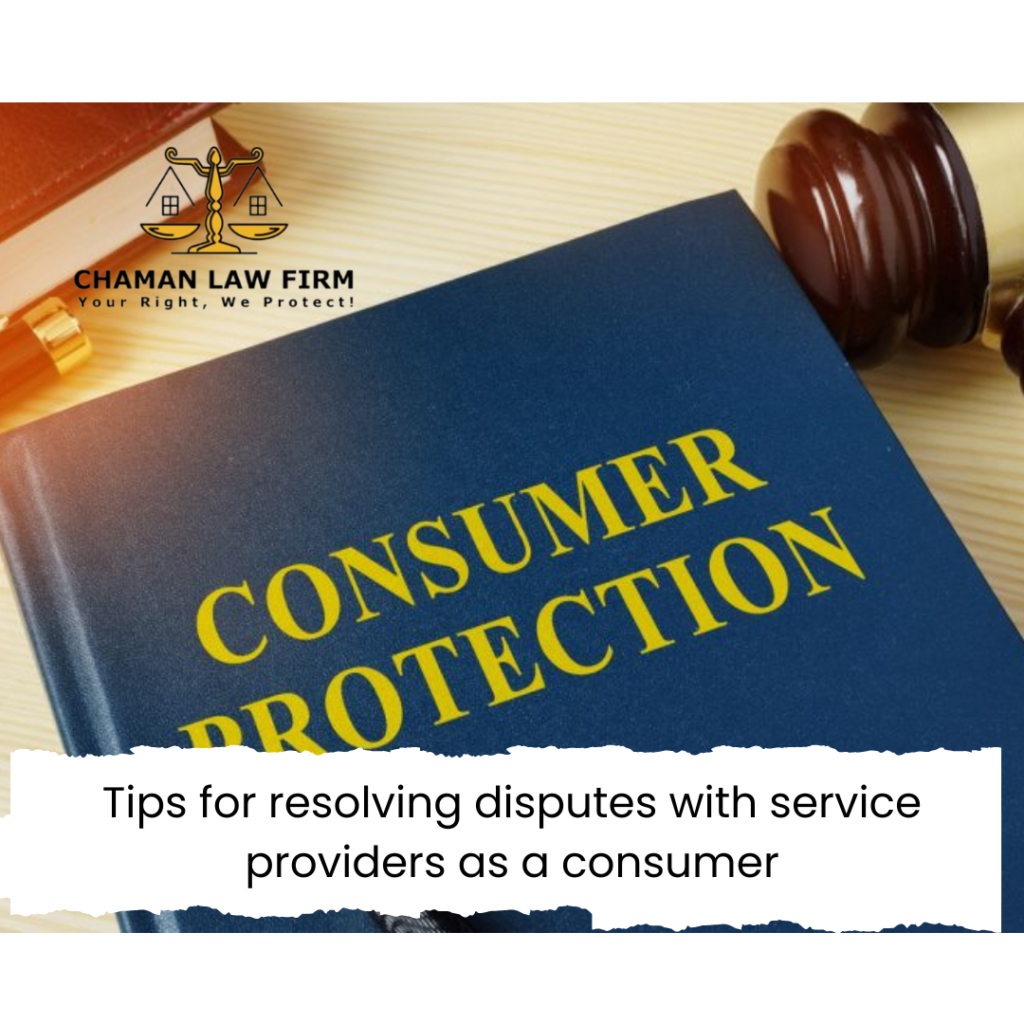Tips for Resolving Disputes with Service Providers as a Consumer
In our interactions as consumers, disputes with service providers can occasionally arise. Whether it’s a billing issue, subpar service, or a disagreement over contractual terms, handling disputes effectively is essential to protect your rights and reach a satisfactory resolution. This article provides useful tips for resolving disputes with service providers and empowering you as a consumer.
Review the Terms and Documentation:
Start by reviewing any relevant terms and documentation related to the service in question. This may include contracts, service agreements, invoices, or receipts. Familiarize yourself with the agreed-upon terms, payment obligations, service expectations, and any applicable cancellation or refund policies. Understanding the contractual framework will help you assess the legitimacy of your dispute and support your case during resolution attempts.
Communicate Clearly and Concisely:
Open, clear, and concise communication is crucial when resolving disputes with service providers. Contact the service provider directly to express your concerns or dissatisfaction with the service. Clearly explain the issue, providing specific details and supporting evidence, such as photographs, records of communication, or documentation. Remain calm and respectful during your interactions to maintain a constructive dialogue and increase the chances of reaching a resolution.
Follow the Service Provider’s Complaint Procedure:
Most service providers have designated complaint procedures that consumers should follow. Familiarize yourself with these procedures, as they often outline the steps to take when addressing disputes. Follow the specified process for submitting a complaint, including the required forms, documentation, or channels of communication. Adhering to the provider’s complaint procedure demonstrates your willingness to engage in a resolution process and may facilitate a more efficient resolution.
Seek Clarification and Negotiate:
Engage in meaningful dialogue with the service provider to seek clarification and negotiate a resolution. Clearly state your desired outcome or proposed solution, keeping in mind what would be fair and reasonable given the circumstances. Be open to compromise and explore mutually agreeable options that address both parties’ concerns. Negotiation can often lead to a satisfactory resolution without the need for further escalation.
Escalate the Dispute if Necessary:
If your attempts to resolve the dispute directly with the service provider are unsuccessful or unsatisfactory, you may need to escalate the matter. Research the relevant regulatory authorities or industry ombudsman that oversee the specific service sector. File a formal complaint, providing a detailed account of the dispute and any evidence supporting your claim. The regulatory authority or ombudsman will review the case and facilitate further resolution attempts.

Consider Alternative Dispute Resolution:
Alternative dispute resolution methods, such as mediation or arbitration, can be effective in reaching a resolution outside of formal litigation. Mediation involves a neutral third party facilitating negotiations between you and the service provider to find a mutually acceptable solution. Arbitration entails presenting your case to an impartial third party who will make a binding decision. These methods can be less time-consuming and costly than traditional legal proceedings.
Seek Legal Advice:
If the dispute remains unresolved or involves significant legal complexities, seeking legal advice may be necessary. Consult with an attorney experienced in consumer rights or contract law. They can assess the merits of your case, provide guidance on your legal rights and options, and represent your interests during further dispute resolution or legal proceedings. Legal advice can help you make informed decisions and navigate the complexities of the legal system.
Leave Feedback and Share Experiences:
After resolving the dispute, consider leaving feedback or sharing your experience with others. Online platforms, review websites, or social media can be useful avenues for sharing your story. Constructively communicate your experience, detailing how the dispute was resolved and whether you were satisfied with the outcome. This can help other consumers make informed decisions and influence service providers to improve their practices.
Conclusion:
Resolving disputes with service providers requires proactive communication, research, and a willingness to negotiate. By reviewing the terms and documentation, communicating clearly, following the service provider’s complaint procedure, seeking clarification, negotiating, escalating when necessary, considering alternative dispute resolution, seeking legal advice if needed, and sharing your experiences, you can effectively handle disputes as a consumer. Remember to remain calm and respectful throughout the process and assert your rights as a consumer. By taking these steps, you increase the likelihood of reaching a fair resolution and maintaining a positive consumer experience.
